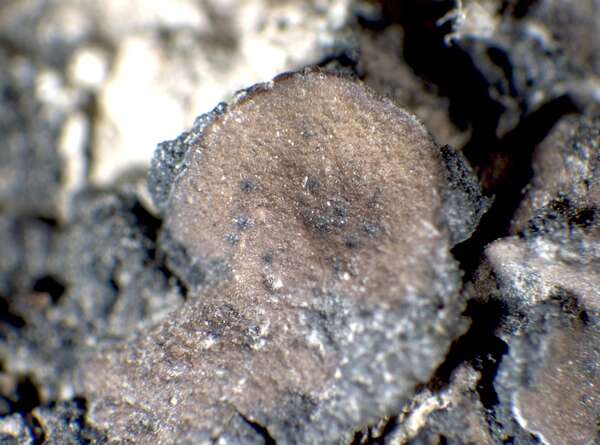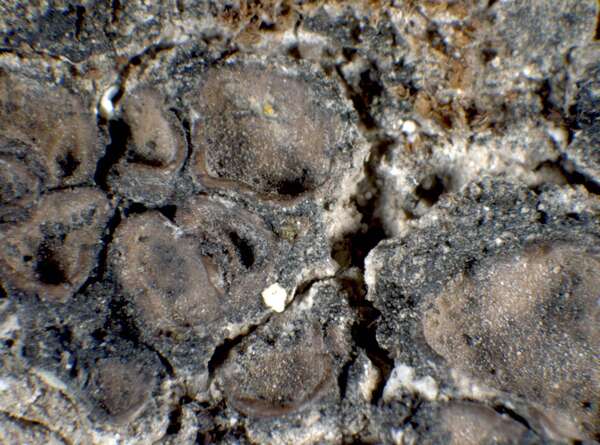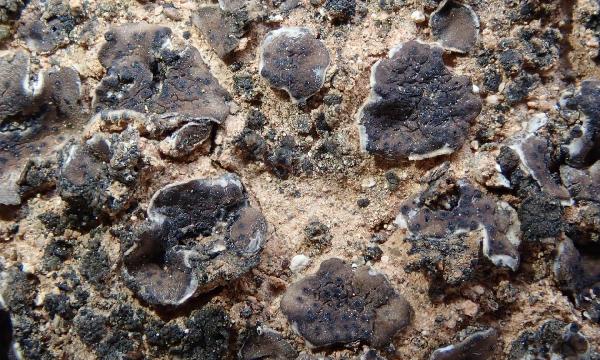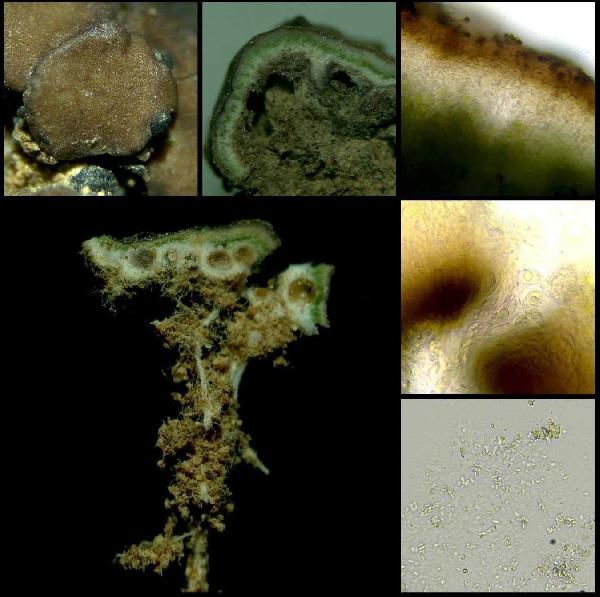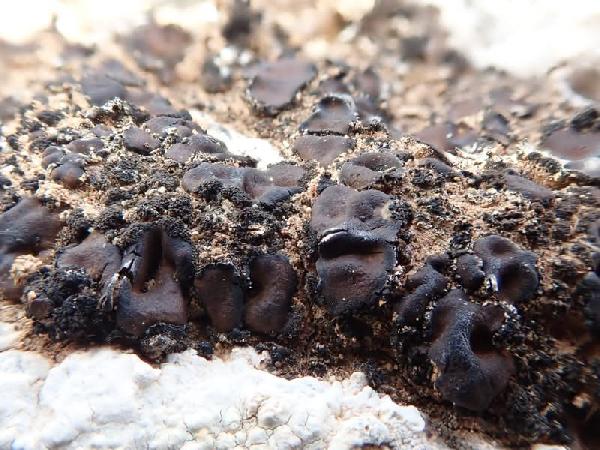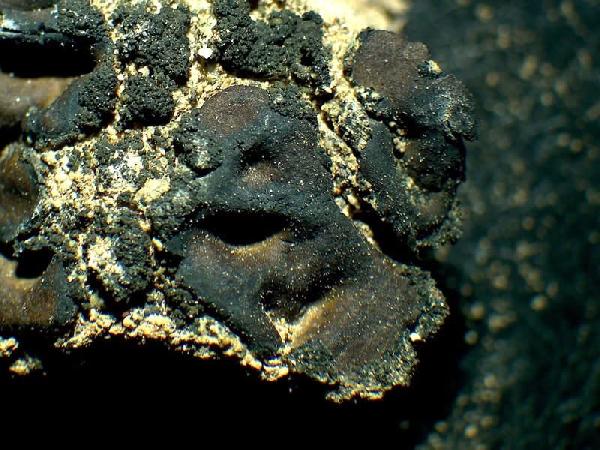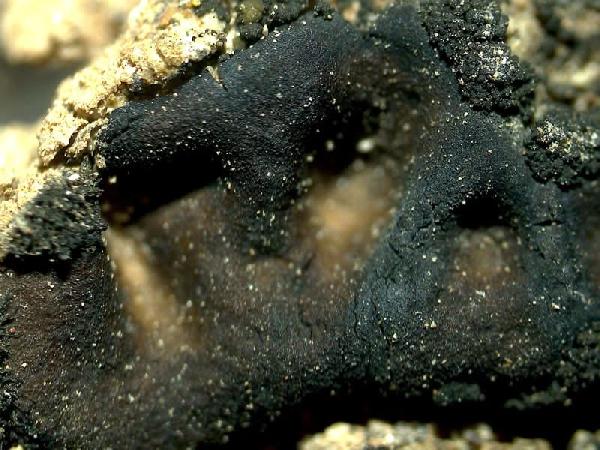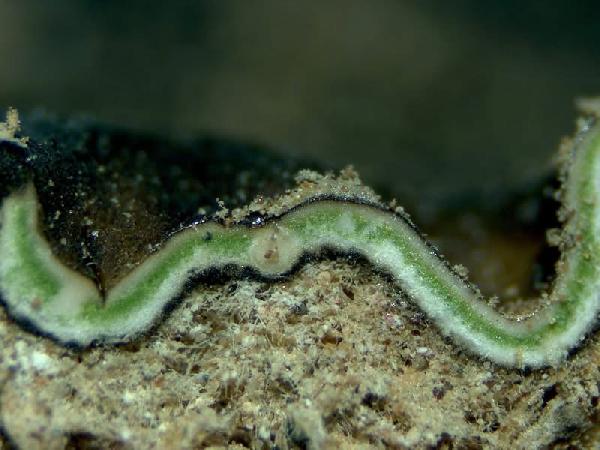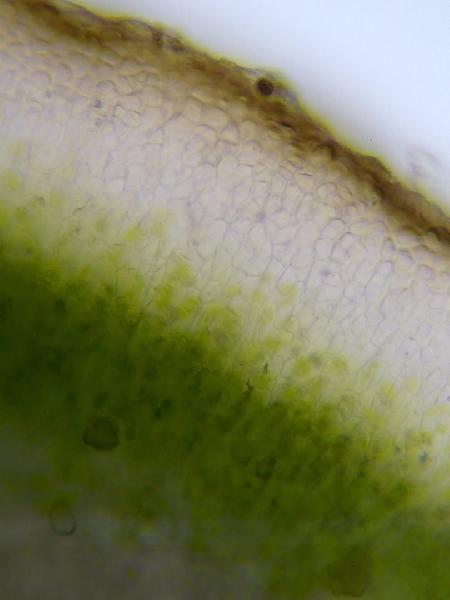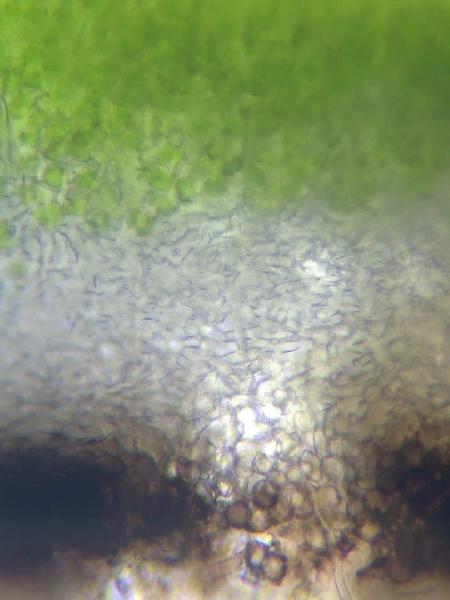Clavascidium semaforonense (Breuss) M. Prieto
in Prieto & al., Am. J. Bot., 99: 28, 2012. Basionym: Catapyrenium semaforonense Breuss - Stapfia, 23: 112, 1990.
Synonyms: Dermatocarpella yunnana H. Harada & Li-S. Wang; Endopyrenium hepaticum f. nigratum Müll. Arg.; Placidium semaforonense (Breuss) Breuss
Distribution: C - Sar. S - Pugl.
Description: Thallus squamulose, pale to dark brown, often grey-pruinose at margins, dull. Squamules , scattered to contiguous, not imbricate, 3-7 mm broad, 0.3-0.55 mm thick, rounded to lobulate, concave to slightly convex, smooth, with an undulate, mostly up-turned margin. Lower surface pale, but often becoming dark with age, attached by dichotomously branched, up to 10 mm long and up to 0.25 mm thick, robust but fragile, pale rhizines and by 3-5.5 µm thick, colourless rhizohyphae. Upper cortex paraplectenchymatous, 50-110 μm thick; medulla with elongated cells running horizontally in upper part, and isodiamerical cells in lower part; lower cortex poorly differentiated from the medulla, with cells not arranged in vertical rows. Perithecia frequent, laminal, immersed in the squamules, globose to pyriform, up to 0.5 mm in diam., without involucrellum. Exciple pale throughout; hymenial gel hemiamyloid; hamathecium of periphyses, interascal filaments absent. Asci 8-spored, cylindrical at least when young (sometimes turning clavate at maturity), thin-walled, I-, without a tholus. Ascospores 1-celled, hyaline, broadly ellipsoid, thin-walled, uniseriately arranged at least in the young asci, (12-)14-18(-19) x (7-)7.5-9(-10) μm. Pycnidia black, marginal, immersed, Dermatocarpon-type. Conidia ellipsoid, 3-4.5 x 1.5-2 μm. Photobiont chlorococcoid. Spot tests: cortex and medulla K-, C-, KC-, P-, UV-. Chemistry: without lichen substances.Note: a Macaronesian-Mediterranean to Irano-Turanic terricolous lichen, also known from on fine-sandy soils in open, dry Mediterranean grasslands and garrigues. See also note on the genus.
Growth form: Squamulose
Substrata: soil, terricolous mosses, and plant debris
Photobiont: green algae other than Trentepohlia
Reproductive strategy: mainly sexual
Commonnes-rarity: (info)
Alpine belt: absent
Subalpine belt: absent
Oromediterranean belt: absent
Montane belt: absent
Submediterranean belt: absent
Padanian area: absent
Humid submediterranean belt: absent
Humid mediterranean belt: very rare
Dry mediterranean belt: rare
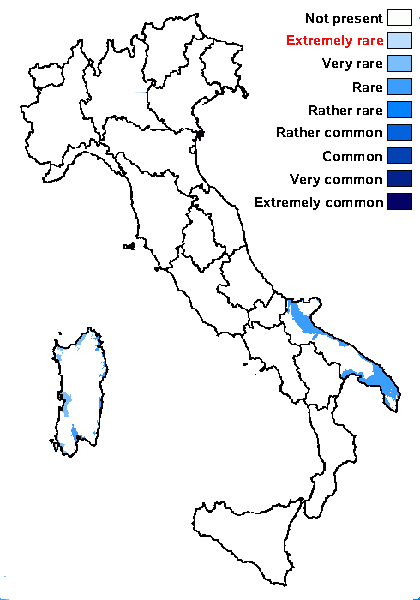
Predictive model
Herbarium samples
Growth form: Squamulose
Substrata: soil, terricolous mosses, and plant debris
Photobiont: green algae other than Trentepohlia
Reproductive strategy: mainly sexual
Commonnes-rarity: (info)
Alpine belt: absent
Subalpine belt: absent
Oromediterranean belt: absent
Montane belt: absent
Submediterranean belt: absent
Padanian area: absent
Humid submediterranean belt: absent
Humid mediterranean belt: very rare
Dry mediterranean belt: rare

Predictive model
| Herbarium samples |
 INDEX FUNGORUM
INDEX FUNGORUM
 GBIF
GBIF
